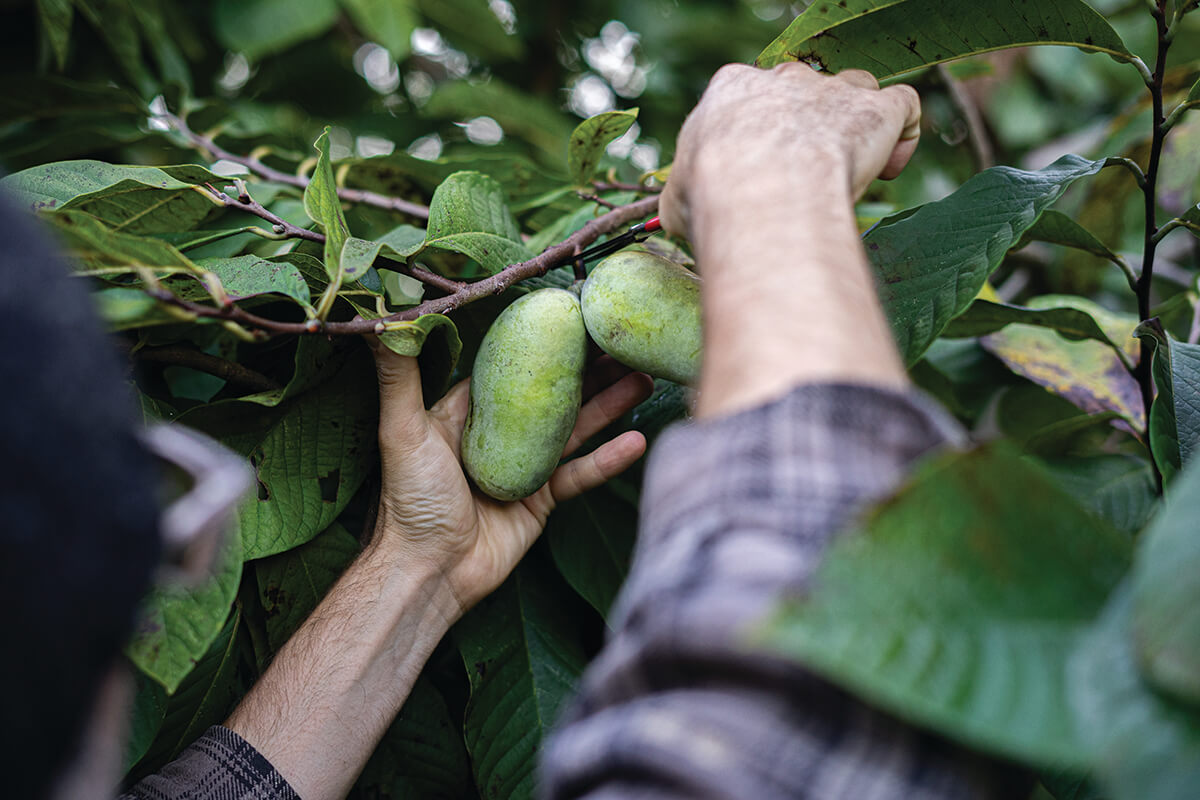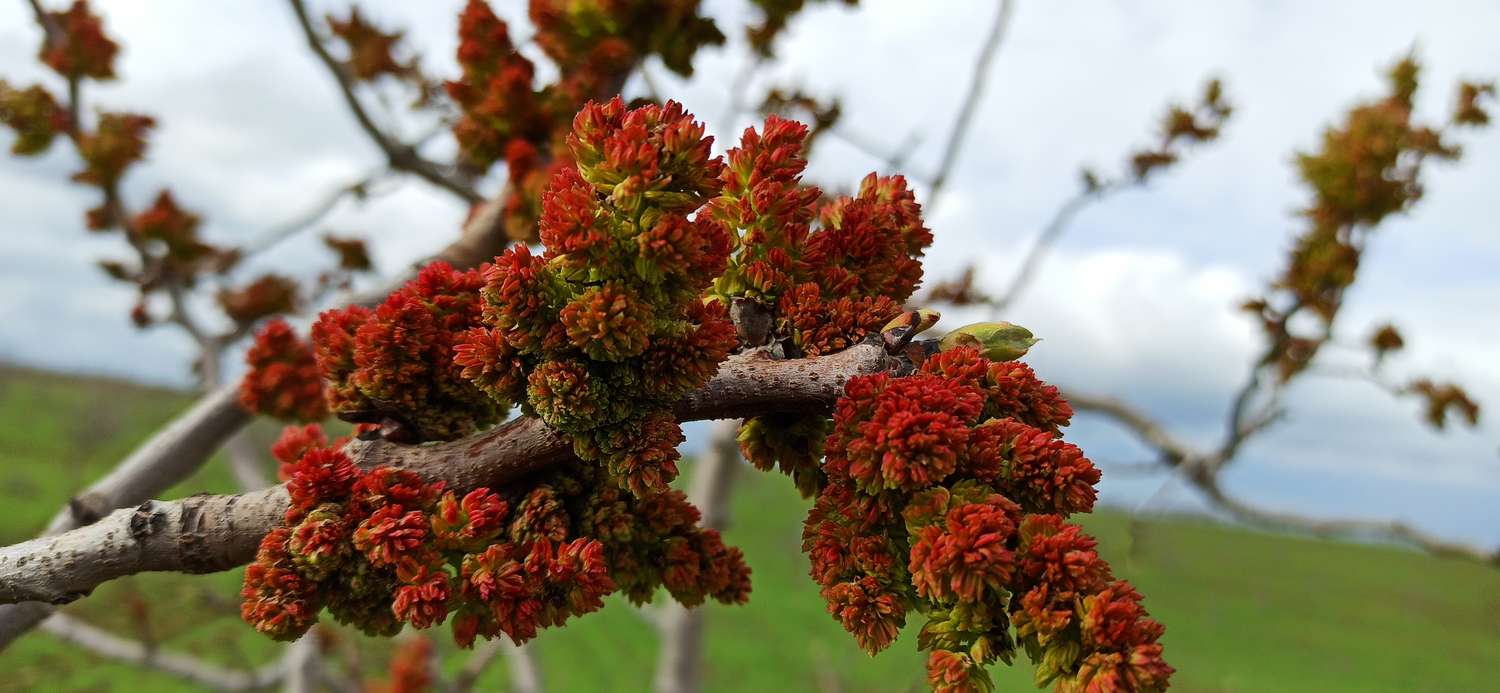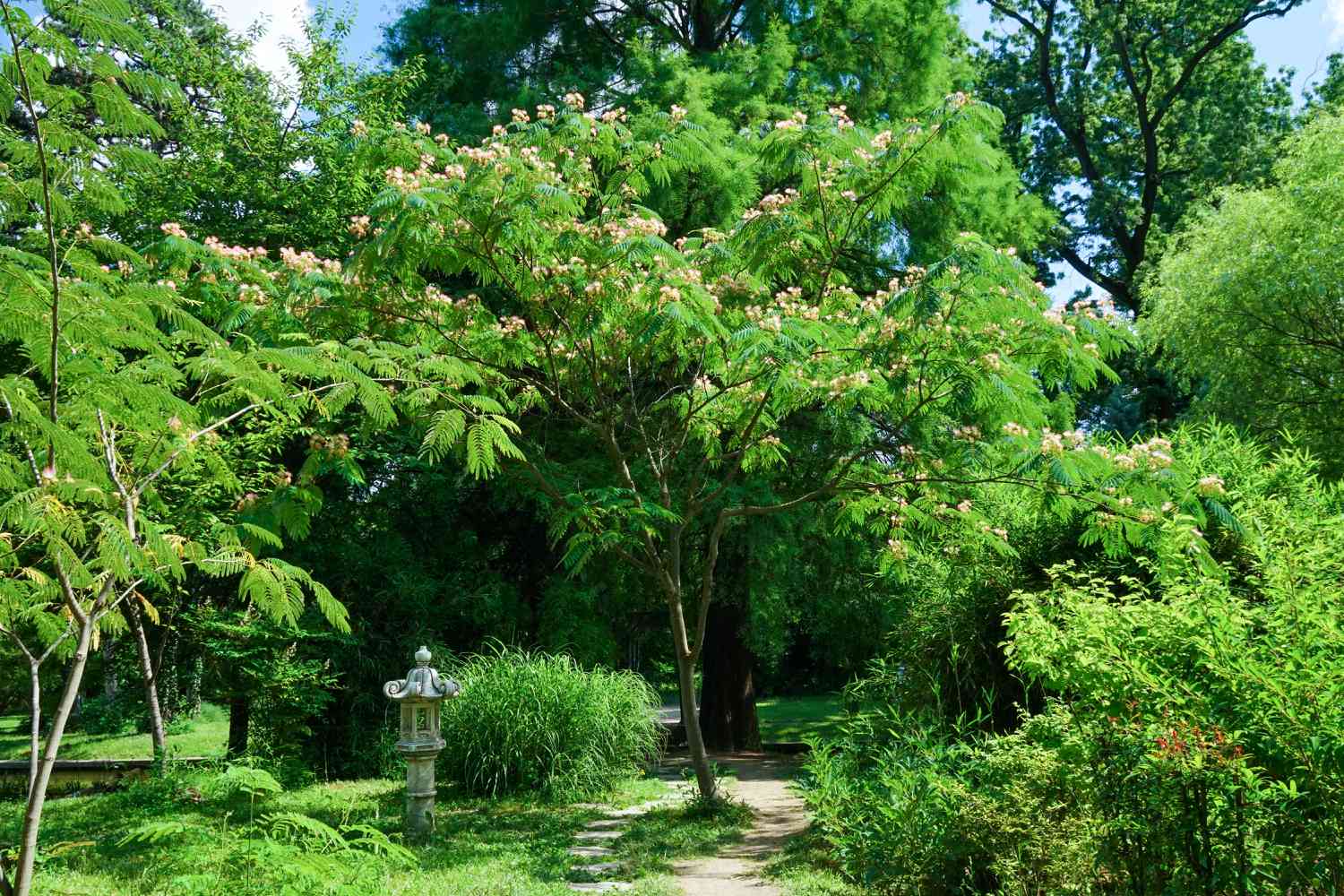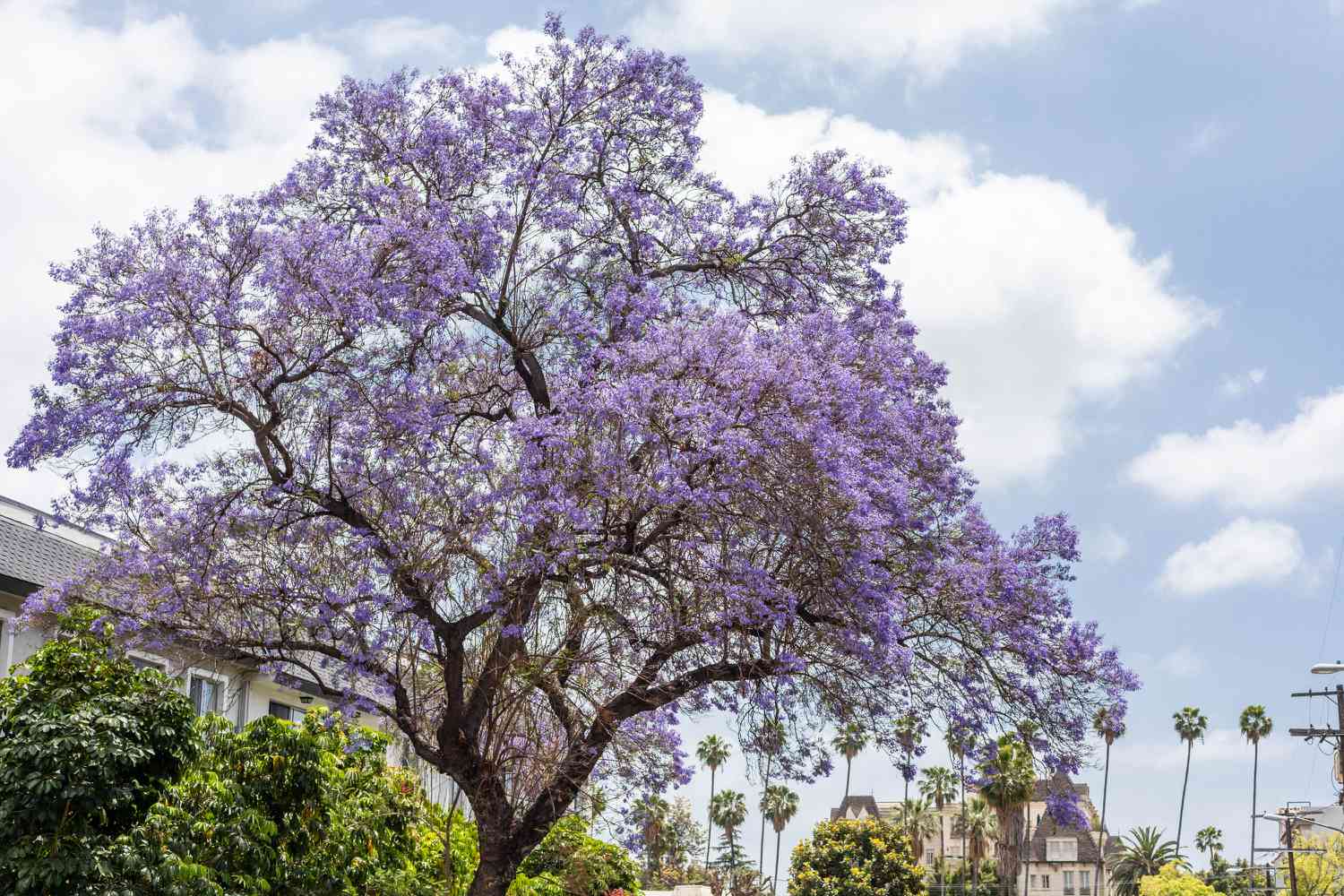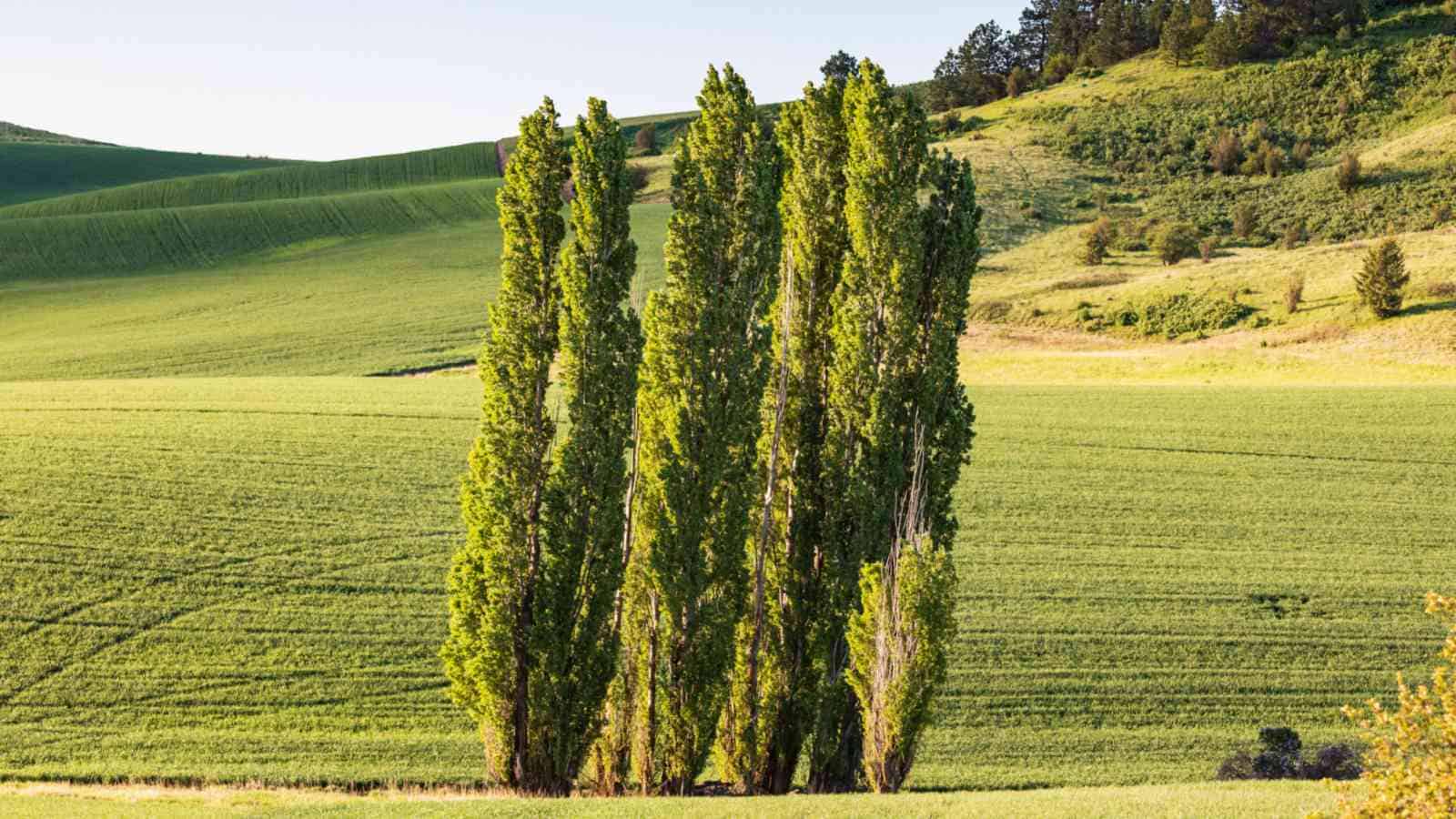Home>Types of Gardening>Edible Gardening>Where Do Almond Trees Grow


Edible Gardening
Where Do Almond Trees Grow
Published: November 9, 2023
Discover the ideal conditions for growing almond trees in your edible garden. Learn where almond trees thrive and how to cultivate these delicious nuts at home.
(Many of the links in this article redirect to a specific reviewed product. Your purchase of these products through affiliate links helps to generate commission for Chicagolandgardening.com, at no extra cost. Learn more)
Table of Contents
Introduction
Welcome to the world of almond trees! If you have been dreaming of growing your own almond trees and enjoying the delicious, nutrient-rich almonds they produce, you’re in the right place. Almond trees are not only beautiful additions to any garden or landscape, but they also offer an array of benefits, both for your health and the environment.
Almond trees belong to the Rosaceae family and are native to the Middle East region. They have been cultivated for thousands of years and have become a staple crop in many regions around the world. With their delicate white flowers and vibrant green leaves, almond trees not only provide visual appeal but also contribute to important environmental processes, such as pollination.
But before you dive into the world of almond tree cultivation, there are a few things you need to know. Like any plant, almond trees have specific requirements when it comes to climate, soil, and care. Understanding these requirements will help you create an optimal growing environment for your almond trees and maximize their productivity.
In this article, we will explore the climate requirements for almond trees, their geographical distribution, and the specific regions where they thrive. We will also discuss the factors that affect almond tree growth and provide insights into the cultivation and harvesting processes. By the end, you will have a comprehensive understanding of the wonderful world of almond trees and be ready to embark on your own edible gardening journey.
So, let’s dive in and discover the fascinating world of almond trees and how you can successfully grow them in your own backyard or garden!
Climate Requirements for Almond Trees
Almond trees have specific climate requirements to thrive and produce an abundant harvest of delicious almonds. Understanding these climate factors is essential to ensure the success of your almond tree cultivation.
The first important aspect to consider is temperature. Almond trees require a Mediterranean-like climate, with hot and dry summers and mild, wet winters. They prefer a temperature range of 60°F to 80°F (15°C to 27°C) during the growing season. This allows the trees to go through their dormancy period in winter when temperatures drop below 45°F (7°C). However, they are also sensitive to late frosts, which can damage the fragile blooms and reduce fruit production.
Sunlight is another crucial factor for almond tree growth. These trees thrive in full sun, which means they require at least six to eight hours of direct sunlight daily. Adequate sunlight is essential for photosynthesis, the process by which plants convert sunlight into energy to fuel their growth and development. Therefore, it is advisable to plant almond trees in an open, sunny location away from shading structures or other trees that may obstruct sunlight.
When it comes to rainfall, almond trees have moderate water requirements. They prefer areas with annual rainfall between 18 to 24 inches (45 to 60 cm). However, they are also adaptable and can tolerate drought conditions to some extent. It is important to note that excessive moisture, especially during the dormant period, can cause root rot and other diseases. Therefore, it is essential to ensure proper drainage and avoid overwatering to maintain a healthy growing environment.
Wind also plays a significant role in almond tree cultivation. While almond trees can tolerate moderate winds, excessive or strong winds can cause damage to their delicate branches and flowers. Planting them in a location sheltered from strong winds, such as near walls or other structures, can help protect them from wind damage.
In summary, almond trees thrive in a Mediterranean-like climate with hot and dry summers, mild winters, and moderate rainfall. They require full sun exposure, moderate water availability, and protection from strong winds. By providing these ideal climate conditions, you can create an optimal environment for your almond trees to flourish and produce a bountiful harvest of delicious almonds.
Geographical Distribution of Almond Trees
Almond trees are native to the Middle East, specifically in regions such as Iran, Iraq, and Turkey. However, due to their adaptability and popularity, almond trees have been successfully cultivated in various parts of the world. Today, they can be found in different continents, contributing to local economies and providing a source of nutritious food.
When it comes to the geographical distribution of almond trees, they prefer regions with a Mediterranean-like climate, characterized by dry summers and mild winters. This climate type is found in several countries, making them suitable for almond tree cultivation.
In Europe, Spain is one of the main producers of almonds. In the southern regions of Andalusia and Catalonia, where the climate is ideal for almond trees, vast orchards can be found. The varieties grown in Spain include Marcona, Llargueta, and Valencia, which are highly prized for their unique flavors and qualities.
Italy is another Mediterranean country where almond trees thrive. Sicily, specifically, is renowned for its almond production, with the famous Pizzuta d’Avola variety being cultivated in the region. The sweet and flavorful almonds from this area are highly sought after for culinary purposes.
In the United States, California is the primary almond-producing state. The Central Valley, with its warm and dry climate, provides the perfect conditions for almond tree cultivation. California accounts for more than 80% of the world’s almond production, making it a major player in the global almond industry.
Other regions around the world where almond trees are grown include Australia, particularly in the regions of Victoria and South Australia. The Mediterranean climate in these areas enables successful almond cultivation, contributing to the country’s agricultural sector.
Additionally, almond trees can be found in regions of North Africa, such as Morocco and Tunisia, where the climate is suitable for their growth. These countries have a long history of almond cultivation, with almonds being a staple ingredient in their traditional cuisines.
Overall, the geographical distribution of almond trees extends beyond their Middle Eastern origins. They have successfully adapted to different regions around the world, where the climate and environmental conditions allow for their growth and productivity. Whether it’s in Europe, the United States, Australia, or North Africa, almond trees continue to thrive and provide a valuable resource for both local communities and global markets.
Almond Tree Growing Regions
Almond trees can thrive in various regions around the world, as long as they have suitable climate conditions and proper care. Let’s explore some of the notable almond tree growing regions and the unique characteristics they bring to the world of almond production.
1. California, United States: California is the top almond-producing region globally, accounting for the majority of the world’s almond crop. The fertile soils and Mediterranean climate of the Central Valley create an ideal environment for almond tree cultivation. The large-scale orchards in California produce a wide variety of almond cultivars, including Nonpareil, Carmel, and Monterey.
2. Spain: Spain is renowned for its almond production, particularly in the regions of Andalusia and Catalonia. The warm and dry climate combined with well-drained soils creates optimal conditions for almond tree growth. Spanish almonds, such as the Marcona and Llargueta varieties, are highly regarded for their unique flavors and textures.
3. Australia: Australia has emerged as a significant player in the global almond market. The Murray Valley region, located in Victoria and South Australia, is known for its large-scale almond farms. The Mediterranean-like climate and access to water from the Murray River contribute to the success of almond tree cultivation in this region. Australia primarily cultivates varieties like Nonpareil, Carmel, and Price.
4. Italy: In Italy, Sicily is particularly known for its almond production. The warm and sunny climate on the island, along with volcanic soil, provides favorable conditions for almond trees to thrive. Sicilian almonds, especially the renowned Pizzuta d’Avola variety, are highly sought after for their exquisite flavor and aroma.
5. Morocco: Morocco is a key almond-producing country in North Africa. The country’s diverse climate, ranging from Mediterranean to semi-arid, allows for successful almond tree cultivation. The region of Tafilalet is particularly famous for its almond orchards, producing both sweet and bitter almond varieties.
6. Greece: Greece has a long history of almond cultivation, dating back to ancient times. The country’s mild winters and hot, dry summers create favorable conditions for almond tree growth. Greek almonds, such as the famous Kortia and Ferragnes varieties, are prized for their exceptional taste and texture.
These are just a few of the notable almond tree growing regions around the world. Each region brings its unique characteristics, such as climate, soil composition, and almond varieties, to the table. Whether you prefer the creamy and sweet Spanish almonds or the rich and flavorful Australian almonds, the global almond industry offers a wide range of options to satisfy your taste buds.
Factors Affecting Almond Tree Growth
Several factors play a crucial role in the growth and development of almond trees. Understanding these factors and how they influence the health and productivity of almond trees is essential for successful cultivation. Let’s explore some of the key factors that can affect almond tree growth.
1. Climate: The climate is one of the most significant factors influencing almond tree growth. As mentioned earlier, almond trees thrive in a Mediterranean-like climate with hot and dry summers and mild, wet winters. Extreme temperature fluctuations, frost, and excessive rainfall can have detrimental effects on almond trees. It is important to choose almond tree varieties that are suitable for your specific climate conditions and provide the necessary care to protect them from adverse weather events.
2. Soil: Almond trees prefer well-drained soils with a pH level between 6 and 7.5. Sandy or loamy soils are ideal for almond tree cultivation as they provide good aeration and drainage. Poorly drained or waterlogged soils can lead to root rot and other diseases. Conducting soil tests and amending the soil with organic matter or appropriate fertilizers can help create a favorable growing environment for almond trees.
3. Water: Almond trees have moderate water requirements, especially during the growing season. While they can tolerate periods of drought, they also need sufficient irrigation to ensure healthy growth and fruit production. Proper watering techniques, such as deep and infrequent watering, are recommended to encourage the development of deep and robust root systems. Care should be taken to avoid overwatering, as excessive moisture can lead to root diseases.
4. Pollination: Almond trees are self-incompatible, which means they require cross-pollination with another compatible almond variety for fruit set. Honeybees play a vital role in the pollination process by transferring pollen from one tree to another. Therefore, ensuring the presence of honeybee populations during the almond bloom period is crucial for successful pollination and fruit development.
5. Pruning and Training: Proper pruning and training techniques are essential for shaping almond trees, maintaining their health, and optimizing fruiting. Pruning helps to remove dead or diseased branches, improve air circulation, and stimulate new growth. It is important to follow proper pruning practices to avoid excessive pruning, which can inhibit fruit production.
6. Pest and Disease Management: Almond trees are vulnerable to various pests and diseases, including aphids, mites, scale insects, and fungal infections. Regular monitoring and early detection, along with implementing appropriate integrated pest management (IPM) practices, are essential for preventing and managing pest and disease outbreaks. Using organic and environmentally friendly methods can help minimize the use of chemical pesticides and maintain a healthy ecosystem within the orchard.
By considering these factors and providing the necessary care and attention, you can create a favorable environment for almond tree growth. This will ensure the health and longevity of your almond trees, resulting in abundant harvests of delicious almonds for years to come.
Cultivation of Almond Trees
Growing almond trees can be a rewarding endeavor, whether you’re a seasoned gardener or new to the world of edible gardening. Here are some key steps to successfully cultivate almond trees and enjoy the abundance of delicious almonds they produce.
1. Variety Selection: Start by choosing the right almond tree variety suitable for your climate and growing conditions. Common varieties include Nonpareil, Carmel, and Mission. Consider factors such as chill hours required for fruit set and the availability of cross-pollinators to ensure successful almond production.
2. Site Selection: Almond trees thrive in full sun, so choose a location that receives at least six to eight hours of direct sunlight each day. Ensure the soil is well-drained and fertile, with a pH level between 6 and 7.5. Conduct a soil test to determine nutrient deficiencies and make necessary amendments before planting.
3. Planting: Plant almond trees in late winter or early spring when they are dormant. Dig a hole wide and deep enough to accommodate the root ball. Place the tree in the hole, ensuring the bud union is above the soil level. Fill the hole with soil and firm it gently around the tree. Water thoroughly after planting.
4. Irrigation: Almond trees require regular watering, especially during the first few years of establishment. Provide deep, infrequent waterings to encourage deep root growth. Use drip irrigation or a soaker hose to ensure water reaches the root zone without wetting the foliage. Adjust watering frequency based on rainfall and weather conditions.
5. Fertilization: Almond trees have specific nutrient requirements for optimal growth and fruit production. Conduct a soil test to determine nutrient deficiencies and apply the appropriate fertilizers accordingly. Generally, a balanced fertilizer with an NPK ratio of 10-10-10 or 14-14-14 is suitable. Apply fertilizers in late winter or early spring before new growth begins.
6. Pruning: Prune almond trees during the dormant season to shape the tree, improve air circulation, and remove dead or diseased branches. Remove low branches and suckers to encourage an open canopy and allow sunlight to reach all parts of the tree. Avoid excessive pruning, as it can reduce fruit production.
7. Pest and Disease Management: Regular monitoring is essential to identify and address pest and disease issues early on. Use integrated pest management (IPM) strategies, including beneficial insects and organic pesticides, to manage common pests like aphids and mites. Prevent fungal infections by promoting good air circulation and avoiding overhead irrigation.
8. Harvesting: Almond trees typically start producing nuts after three to five years. Harvest when the hulls split and the shells inside have dried out. Allow the nuts to dry further before removing the hulls. Store almonds in a cool, dry place to maintain their quality.
By following these cultivation practices, you can successfully grow almond trees and enjoy the beauty of their blossoms and the deliciousness of their almonds. Be patient, as almond trees take time to establish, but with proper care and attention, they will reward you with bountiful harvests for many years to come.
Harvesting Almonds
Harvesting almonds is an exciting time for almond tree growers as it marks the culmination of their hard work and patience. Knowing when and how to harvest almonds is crucial to ensure optimal flavor and quality. Here are the key steps involved in the almond harvesting process.
1. Timing: Almonds are typically ready for harvest in late summer or early fall, depending on the variety and growing region. Pay attention to the hulls, the outer green covering of the almond, as an indicator of maturity. When the hulls split open and reveal the dry, brown shells inside, it’s a sign that the nuts are ready for harvest.
2. Harvesting Method: There are two common methods for harvesting almonds – shaking and sweeping. For small-scale operations, tree shaking involves using a mechanical shaker or manually shaking the trunk or branches to dislodge the almonds. The nuts fall onto a tarp or ground cover placed beneath the tree for easy collection. For larger-scale operations, a mechanical sweeper is used to gather the almonds from the ground. This method is efficient for harvesting a large number of nuts quickly.
3. Drying and Hulling: After harvesting, allow the almonds to dry for a few days to reduce their moisture content. This can be done by spreading them out in a single layer on a clean, dry surface in a well-ventilated area. Once the almonds are sufficiently dried, remove the hulls. This can be done by gently crushing the hulls using a roller or by rubbing the almonds together in your hands. The hulls will separate, leaving the smooth almond shells behind.
4. Storage: Proper storage is essential to preserve the quality and freshness of almonds. Place the hulled almonds in airtight containers or sealable bags and store them in a cool, dry place away from sunlight. Alternatively, you can store almonds in the refrigerator or freezer to extend their shelf life. Almonds can be stored for several months, but it is recommended to consume them sooner for optimal flavor and texture.
5. Utilizing the Almonds: Once harvested and properly stored, almonds can be enjoyed in a variety of ways. They can be eaten as a nutritious snack on their own or used as ingredients in various recipes, including baked goods, salads, pestos, or nut milks. Almonds can also be roasted, salted, or flavored with different spices for added versatility and enjoyment.
Remember that almond trees are perennial, so each year you can look forward to another harvest of delicious almonds. With proper timing, harvesting techniques, and post-harvest care, you can enjoy the fruits of your labor and share the bounty of freshly harvested almonds with family and friends.
Conclusion
Embarking on the journey of growing almond trees in your own edible garden can be a rewarding and enriching experience. By understanding the climate requirements, geographical distribution, and factors influencing almond tree growth, you can create an optimal environment for their cultivation.
Almond trees thrive in Mediterranean-like climates with hot, dry summers and mild, wet winters. Regions such as California, Spain, Australia, Italy, and Morocco are known for their successful almond tree cultivation. Factors like soil, water, pollination, pruning, and pest management also play significant roles in the health and productivity of almond trees.
Through careful cultivation practices, including proper site selection, irrigation, fertilization, and pruning, you can enjoy the beauty of almond tree blossoms and the delicious harvest of almonds. Knowing when to harvest almonds, drying them, and storing them properly will help preserve their flavor and quality.
Whether you’re a home gardener or a commercial almond farmer, the journey of growing almond trees provides a deeper connection with nature, a sense of achievement, and the opportunity to enjoy the nutritional benefits of these delightful nuts. Almonds are not only a versatile and nutritious food source but also a valuable part of our ecological system, contributing to pollination and biodiversity in our gardens and landscapes.
So, gather your gardening tools, select your favorite almond tree variety, and dive into the world of almond tree cultivation. With patience, care, and a little bit of knowledge, you can create a thriving almond orchard and savor the joy of nurturing these magnificent trees while reaping the rewards of their bountiful harvests year after year.
